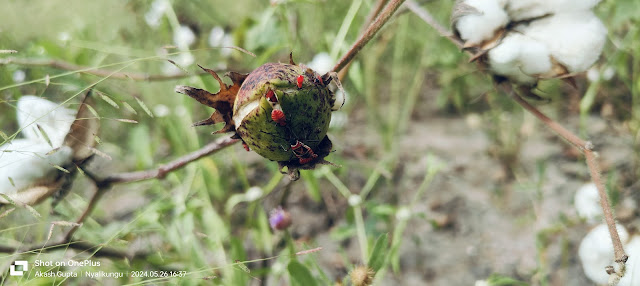Cultivation of Organic Cotton in Africa with Integrated Pest Management (IPM) and Natural Resources
Organic cotton cultivation in Africa has gained momentum due to its sustainable practices and the growing demand for eco-friendly products. A key approach to successful o
rganic cotton farming involves the use of Integrated Pest Management (IPM) and the optimal utilization of natural resources.
Integrated Pest Management (IPM) in Organic Cotton Farming
IPM is a holistic approach to pest control that minimizes the use of synthetic chemicals and emphasizes natural and preventive methods. The main components of IPM in organic cotton farming in Africa include:
Biological Control: Utilizing natural predators such as beneficial insects and birds to keep pest populations in check. For instance, ladybugs and parasitic wasps can help control aphid populations, while birds can prey on caterpillars and other pests.
Cultural Practices: Implementing crop rotation, intercropping, and the use of trap crops. Crop rotation helps in breaking the life cycle of pests, reducing their populations over time. Intercropping with plants like pulses or sunflowers can distract pests from cotton plants. For example, sunflowers are effective trap crops for the American bollworm as they attract the pests away from cotton.
Mechanical Control: Regular monitoring and manual removal of pests. Farmers often use pegboards for scouting and tracking pest levels. By maintaining a consistent monitoring schedule, farmers can detect and manage pest outbreaks before they reach damaging levels.
Use of Resistant Varieties: Planting cotton varieties that are naturally resistant to pests. These varieties have traits such as hairy leaves and higher levels of gossypol, which deter pests.
Organic Pesticides: When necessary, organic farmers use biopesticides derived from natural sources like neem, pyrethrum, or Bacillus thuringiensis (Bt). These biopesticides are effective against a wide range of pests while being safe for the environment and non-target organisms.
Utilization of Natural Resources
Effective organic cotton farming also hinges on the sustainable use of natural resources:
Soil Fertility: Maintaining soil health through the application of compost and organic manures. These organic amendments improve soil structure, enhance nutrient availability, and promote beneficial microbial activity.
Water Management: Implementing efficient irrigation techniques to ensure that cotton plants receive adequate water without wastage. Techniques such as drip irrigation and rainwater harvesting are encouraged to conserve water and maintain soil moisture levels.
Biodiversity: Encouraging biodiversity in and around cotton fields. Diverse cropping systems and natural habitats support the presence of natural predators and pollinators, which are crucial for pest control and crop production. Creating buffer zones with flowering plants can attract beneficial insects and support overall farm biodiversity.
By integrating these IPM strategies and leveraging natural resources, African farmers can achieve sustainable organic cotton production. This approach not only enhances cotton yield and quality but also contributes to environmental conservation and the well-being of farming communities.
Organic cotton farming, with its emphasis on ecological balance and sustainability, holds great promise for Africa's agricultural future. Through the concerted efforts of farmers, researchers, and policymakers, the continent can become a leading producer of high-quality organic cotton.





Comments
Post a Comment